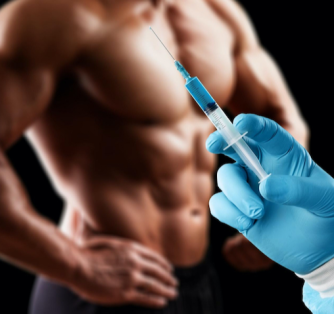Menu
Weight loss
Hormones
Sex
EXPLORE
MEET NU IMAGE MEDICAL
TREATMENTS
MEET NU IMAGE MEDICAL
TREATMENTS
MEET NU IMAGE MEDICAL
Testosterone Replacement Therapy Pellets vs Injections


Maintaining testosterone levels can be difficult for many men, particularly for those who are aging. As men age, testosterone levels decline, often accelerating after the age of 30. Because of this, many men turn to testosterone replacement therapy to solve the problem.
Both testosterone replacement therapy pellets and injections are popular options today. But the question remains: how do hormone replacement differ? Is one better than the other? Read on to find out.
Many health and pharmaceutical professionals tout the benefits of hormone replacement therapies, including testosterone replacement therapy pellets. Testosterone replacement pellets are very effective for treating the symptoms of low testosterone. Symptoms of low testosterone or low T include decreased muscle mass, depression, irritability, hair loss, and reduced energy.
Testosterone pellets are an attractive option for many, simply because you only get a few treatments per year. You go to get treatment four times each year. Each treatment is good for 90 days before the pellets absorb completely into the body. After those four treatments, you will need to get another pellet injection.
When you get a testosterone pellet treatment, a healthcare professional applies a local anesthesia to your hip. Pellet insertion in itself is pretty straightforward. Pellets affect everyone differently, so your experience may be completely different from other people. There may be cases where you wish to change your dosage of pellets. If you wish to do this, you cannot do it right away. You will have to wait until your next scheduled treatment.
There may be cases where your dosage of pellets doesn’t work for you. If this is the case, a healthcare professional can adjust your dosage upon your next visit. That way, the treatment is more effective for your needs.
Injections are also a great option for men who are looking to boost their testosterone levels. Injections require you to visit a healthcare professional more frequently. One distinct difference with injections is the fact that they don’t require anesthesia upon administration. Men typically adjust more easily to injections. A man’s reaction to testosterone will ultimately depend on factors that are specific to him.
The dosage of your injection can be adjusted at any time, so the medication is effective in meeting your needs. According to PubMed, testosterone treatments bring with them their own unique set of problems. Testosterone has a short half-life, but they are still highly effective for most men.
Crystalline testosterone pellets were first approved in 1972. However, they did not come onto the market until 2008. At the time, experts said that the best treatment would be affordable and quite efficient in restoring testosterone to normal levels. When these injections were approved, there was only one other testosterone treatment on the market. The alternative required daily treatments, unpredictable absorption rates, and long-term compliance.
It can take as many as six months to see the full benefits of pellets. Pellet treatments are often uncomfortable, but many men reap tremendous benefits from them, despite any repercussions.
Pellet replacement therapy sessions can be a complicated process. For this treatment, you must go to a health professional’s office where your doctor makes a small incision in the upper part of the buttocks. At this point, your doctor will place a testosterone pellet under your skin. Then, he or she will place a bandage over the spot where the pellet was inserted.
It can potentially take six months for testosterone to build up in your system and have a full effect on the body. Your doctor may need to place another pellet under your skin in the future to ensure you get the maximum benefit of the medication. At this point, you should feel better, as the pellets’ effects rise to full capacity in your system.
While testosterone replacement pellets are very beneficial, it is important to remember that even they come with their own set of side effects. According to Medical News Today, testosterone pellets can increase your risk of developing certain conditions. Possible side effects of testosterone pellets are decreased urine output, oily skin, acne, and a decreased sperm count. A decreased sperm count may seem counterintuitive, since testosterone pellets are meant to enhance male endurance and function.
Other possible side effects include a swollen prostate or breast tissue and decreased testicle size.
While pellets have many benefits, they aren’t right for everyone. One alternative is testosterone replacement injections. Injections place synthetic testosterone into the body, which then replaces testosterone that the body naturally produces. The testosterone injection is known as Aveed. You should take a number of factors into consideration if you wish to get testosterone injections.
This injection has the potential to cause allergic reactions and breathing problems. A doctor or health professional should administer the injection in a healthcare facility. That way, any side effects or negative reactions can be treated there and right away. Much like some other procedures, your doctor will require you to stay there for a minimum of 30 minutes after treatment.
It is important to let your doctor know if you experience side effects, such as trouble breathing, chest pain, trouble swallowing, or hives. Experts have attempted to limit use of this injection, because of its ability to increase the risk of certain health issues. In fact, experts at one time developed a program to limit the injection’s use.
But how do testosterone injections work? According to experts, testosterone injections work by boosting energy, libido, and erection quality. In addition to that, testosterone injections increase a man’s sensitivity to insulin, muscle mass, and bone density. Improvements in mood are another key benefit of testosterone injections.
While testosterone injections have many benefits, you do not reap the full effect of this therapy for a long period of time. It can take as many as six months for you to see an improvement in the quality of ejaculations and erections. Your overall quality of life will begin to improve after three to four weeks.
Mood typically improves after three to six weeks. However, it can take as long as 18 to 30 weeks to see an improvement in mood. According to PubMed, it can take as long as three months for red blood cells to form, as a result of injection therapy. It may take longer for the drug to reach its full capacity, especially in “aging” men.
However, many men may question whether or not testosterone injections are the right fit for them. It’s important to note that normal testosterone ranges “between 300 and 1,000 ng/dL.” If your levels fall below these levels, your doctor may suggest testosterone replacement injections.
While injections yield a plethora of benefits, you need to be cautious if you have certain conditions. According to Healthline, your doctor may monitor you more closely if you have conditions such as sleep apnea, a high red blood cell count, and heart disease. Injections may also put you at an increased risk of developing certain conditions. These include:
-
Heart attack
-
Preexisting or worsening prostate tumors
-
Prostatic hyperplasia or enlarged prostate
Both testosterone pellets and injections have many benefits. Both have timelines to reach full capacity, and both help men improve their overall health. However, the question remains: Which one is better?
According to experts, testosterone injections are the better choice of testosterone therapy to provide your body with hormones. Hormones in the injections work in the same fashion as naturally occurring testosterone. Research has proven these injections to be effective. Injections give you a lot of control, because you have the ability to change the dosage, so it meets your needs.
Conversely, pellets require you to go into a medical facility four times per year. Injections are typically good and last for a total of three months. After three months, the medicine is absorbed completely into the body. After that period of time, you will need your next treatment.
However, it is important to be aware of a key hidden danger of pellets. The spot where pellets are injected can get infected. There is also a possibility that your body may reject the pellets. While everyone has the pellets inserted the same way, not everyone’s body will react well to testosterone pellets. Some people’s bodies absorb the pellets quickly. Others may take longer for the pellets to fully absorb.
As with any medical treatment, it is important to work with your doctor or medical professional. If symptoms or side effects do not go away, it is the responsibility of your provider to make adjustments in doses. However, you may need to wait until your next treatment for your healthcare provider to change your dosage. You generally need to wait until your next treatment for pellets to absorb completely into your body.
After three months have passed, your doctor can increase your dosage. However, you cannot get your increased dosage for a while. Testosterone injections are almost painless. Their risks are minimal, and your doctor has the ability to change your dosage every week to minimize or eliminate symptoms and side effects.
Whether you choose pellets or injections is ultimately up to you. However, it is important to consider your situation and how both treatments would fit into your life.
12 Sources
Nu Image Medical has strict sourcing guidelines to ensure our content is accurate and current. We rely on peer-reviewed studies, academic research institutions, and medical associations. We strive to use primary sources and refrain from using tertiary references.
https://www.ncbi.nlm.nih.gov/pmc/articles/PMC4431706/
https://biote.com/bioidentical-hormone-replacement-pellet-therapy/pellet-types/testosterone
https://www.medicalnewstoday.com/articles/322642#side-effects-and-risks
https://medlineplus.gov/druginfo/meds/a614041.html
https://www.webmd.com/search/search_results/default.aspx?query=testosterone+therapy
https://www.ncbi.nlm.nih.gov/pmc/articles/PMC3188848/
https://www.healthline.com/health/testosterone-injections#bottom-line
https://lowtcenter.com/testosterone-shots-vs-pellets/
https://www.nhlbi.nih.gov/health/stroke
https://www.healthline.com/health/testosterone-pellets
This article is for informational purposes only and does not constitute medical advice. The information contained herein is not a substitute for and should never be relied upon for professional medical advice. Always talk to your physician about the risks and benefits of any treatment. Nu Image Medical may not offer the medications or services mentioned in this article.
